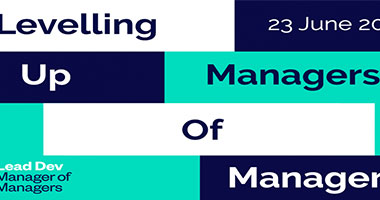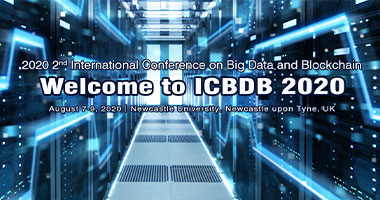Advanced Service as a New Business Model for Manufacturing

Ali Ziaee Bigdeli, Senior Research Fellow,
Aston Business School
Earlier this week, I gave a keynote talk at the Future Manufacturing Conference 2017 at the Royal Bank of Scotland in Edinburgh. The conference was organised by the Scottish Manufacturing Advisory Service (SMAS), and the key theme was around the impacts of Industry 4.0 on the manufacturing operations. There were some great talks by Siemens, RBS, and Scottish Enterprise on how digital technologies such as AI, VR, cloud computing, 3D printing, and data analytics could impact the growth and resilience of manufacturing.
As much as I believe that the role of ‘technology’ is essential, I don’t think it is the complete story - it only explains one side of the coin. Terms such as Industry 4.0, IoT, IIoT, 4IR, and Circular Economy alone cannot draw the full picture of the scope and scale of societal and organisational change currently taking place. Adopted in isolation, as a result, will not be enough to make a manufacturing company resilient and successful in the changing market.
Therefore I focused my presentation on a more holistic view of the world, which is commonly referred to as 'servitization'. Servitization combines all of these aspects, along with the organisational change in terms of structure, resources and capabilities, and fundamental organisational culture, that also need to be changed in order for a manufacturer to compete successfully through 'advanced services' where they really focus on delivering outcomes for customers. One way to holistically explain this concept is to consider advanced service as a new business model. In this way, not only the the impacts of technology become more apparent in the actual offerings, but also the organisational foundations required for the development and delivery of them are explored.
To set the scene in my presentation, I started by explaining the key components of an advanced service business model. As we all know, there are enormous amount of definitions and frameworks proposed by scholars and practitioners that explain the concept of business model, and assist companies in developing one. However, they are generally too detailed and for a manufacturer that has just started the change journey would be an extra layer of complexity. Therefore, we tend to focus on a more broad definition of business model: a model by which an organisation should be able to explain its customer value proposition (or offering), value creation and delivery process, value capture mechanism, and ultimately its competitive advantage rationale over its competitors.
The design of any new business model should start with the notion of 'customer'. Especially when it comes to the B2B context, a manufacturer should be absolutely clear about what are the key pain points of their customers, and how they can provide an offering that enable their customers to get their jobs done. These cannot be achieved without a thorough research on the customer's operation to gain a holistic insight. In the context of advanced service, customer value proposition should be seen as a form of 'capability' in which the manufacturer enters a contract to deploy a combination of resources to achieve the customer’s desired goal. These capabilities, ultimately, deliver functional values including for examples saving time, reducing cost and risks, etc. These customer value propositions could be categorised into three forms: customer-asset focused (e.g. machine capability), customer-process focused (e.g. business process capability), and customer network focused (e.g. business model capability).
The value creation and delivery process in the context of an advanced service is heavily dependent on the collaboration with the customers - in fact the value is co-created with them and in spite of the traditional world of manufacturing, customers should be seen more as insider since they play a key role in the design and development of the customer value proposition. In such scenario, manufacturer's KPIs should be revised and become the ones used by their customers, their facilities need to be more decentralised around their customer's base, their capabilities and competencies should shift towards a service-centric mind-set, and their operations should further focus on collaboration and cooperation with companies in the wider value chain (ecosystem), in addition to those who have been traditionally part of their supply chain.
After realising what the customer value proposition could look like, and how it could be developed and delivered, it's time to think about 'how much does it cost us to make such offering?' and 'on what basis should we charge our customers?' (the value capture mechanism). Lots still need to be done to be able to clearly explain the costing side of advanced services offering. What is clear, though, is that the costing structure should focus on the customer's profiling and how such offering enables them to create more revenue rather than just thinking how much does it cost us to develop this offering.
In terms of the revenue models for an advanced service business model, we have carried out a thorough research on the previous successful manufacturers (including MAN Truck & Bus, Goodyear, Rolls Royce, Caterpillar, and GE Power) to understand how they have developed their revenue models. Based on this, we believe there are six types of revenue models that could be applied in the context of advanced service business model. The first two types are based on Fixed payment models, where the manufacturer could charge its customer either through a flat fee-based (i.e. pay set amount per month for fixed term) or profile-based (i.e. pay differing proportion of annual fee per month/quarter based on customer’s historic operations). The revenue model could also be based on variable payments; either usage-based (i.e. pay as the capability is used), output-based (i.e. pay for the achieved output), or outcome-based (i.e. pay for the (financial) results achieved). A sixth type also exist - a hybrid model, where the manufacturer could select from the five above-mentioned models based on the offering and the relationship with the specific customer.
A key question still remains – where is the competitive advantage in these?Advanced service offerings could be developed and delivered by third parties, which are not necessarily manufacturers. Air France – KLM provide Power-by-the-Hour for themselves and their customers, exactly in the similar way as Rolls Royce do. However, Rolls Royce as the manufacturer of the engine is in the position of improving and enhancing the production of the engines based on the data they gather from their customers – something that no one else can do as they do not know how the engines are actually manufactured. So, the competitive strategy in this sense lies with the intellectual property and the knowledge of the production.
So, I believe we are halfway through and there is still way to go to bring these two views (i.e. it’s all about technology vs. there’s much more than just technology) closer together. Dr Ziaee Bigdeli is a Senior Research Fellow at The Advanced Services Group, the centre of excellence in research and practice on servitization and advanced services within Aston Business School, Aston University. His interests lie in the organisational change and business model innovation brought about when organisations move towards providing capabilities rather than just selling products on a transaction basis.
Subscribe to IEra womenleaders
News
A look at the history of public media in the U.S. as Republicans target federal funding
Pilot and 2 young daughters survive the night on airplane wing after crashing into icy Alaska lake
Columbia Planned Tighter Protest Rules Even Before Trump Demanded Them
US House Speaker Johnson says Congress can 'eliminate' district courts
Texas lawmaker Jasmine Crockett defends 'hot wheels' comment about Gov. Greg Abbott
Vance to join wife for Greenland trip on Friday, suggests global security at stake
Columbia student protester can’t be detained for now as she fights deportation, judge rules
Tesla Stock Rises for 5th Straight Session—Watch These Key Price Levels
Kroger countersues rival Albertsons after demise of $25 billion merger
The Best Deals From Amazon’s Big Spring Sale (and Across the Internet) This Week
Asia markets trade mostly higher after Wall Street extends gains on hopes of softer Trump tariffs














